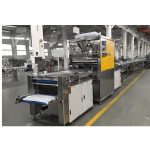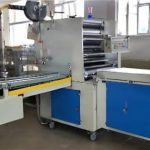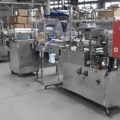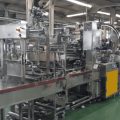
Introduction to Foil Lids
Foil lids are an essential component in the packaging industry, providing a secure and protective seal for various products. These lids are commonly used in food packaging, pharmaceuticals, and other industries where product integrity is paramount. But what exactly are foil lids made of? In this article, we will delve into the materials and manufacturing processes involved in creating foil lids, and how they relate to the use of an air bubble wrap machine.
Materials Used in Foil Lids
Aluminum Foil
The primary material used in foil lids is aluminum foil. Aluminum is chosen for its excellent barrier properties, which protect against moisture, oxygen, and light. This ensures that the contents remain fresh and uncontaminated. Aluminum foil is also lightweight, flexible, and recyclable, making it an environmentally friendly option.
Lacquers and Coatings
To enhance the performance of aluminum foil, various lacquers and coatings are applied. These coatings can provide additional protection against corrosion, improve heat sealability, and enhance the overall appearance of the foil lid. Common coatings include heat-seal lacquers, protective lacquers, and print primers.
Paper and Plastic Layers
In some cases, foil lids may be laminated with paper or plastic layers. These additional layers can provide extra strength, improve printability, and offer additional barrier properties. For example, a paper layer can make the lid easier to handle and open, while a plastic layer can provide extra protection against punctures and tears.
Manufacturing Processes
Foil Rolling
The production of foil lids begins with the rolling of aluminum ingots into thin sheets. This process involves passing the aluminum through a series of rollers to achieve the desired thickness. The resulting aluminum foil is then annealed to improve its ductility and strength.
Lamination
If additional layers are required, the aluminum foil is laminated with paper or plastic. This process involves bonding the layers together using adhesives or heat. The laminated foil is then cut into the appropriate size and shape for the lids.
Printing and Coating
Once the foil is prepared, it can be printed with branding, instructions, or other information. This is typically done using flexographic or rotogravure printing techniques. After printing, the foil may be coated with lacquers to enhance its properties and ensure a secure seal.
The Role of Air Bubble Wrap Machine
Protective Packaging
An air bubble wrap machine plays a crucial role in the packaging process, especially when it comes to protecting delicate foil lids. The machine produces air bubble wrap, which is used to cushion and protect the lids during transportation and storage. This helps prevent damage and ensures that the lids arrive in perfect condition.
Efficiency and Cost-Effectiveness
Using an air bubble wrap machine can significantly improve the efficiency of the packaging process. The machine can produce large quantities of bubble wrap quickly and consistently, reducing the time and labor required for manual packaging. This can lead to cost savings and increased productivity for manufacturers.
Conclusion
Foil lids are made from a combination of aluminum foil, lacquers, coatings, and sometimes paper or plastic layers. These materials are carefully selected and processed to provide a secure and protective seal for various products. The use of an air bubble wrap machine further enhances the packaging process by providing additional protection and improving efficiency. Understanding the materials and processes involved in creating foil lids can help manufacturers make informed decisions and ensure the highest quality packaging for their products.




